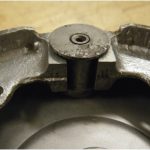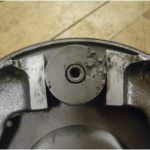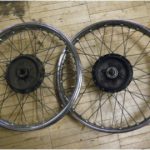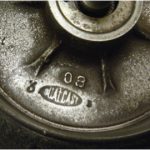Our Triumph Tiger Cub uses drum brakes. Drum brakes are brakes in which two brake shoes push out against the drum, which is an inner surface of the wheel. This causes friction and stops the wheel from rotating.
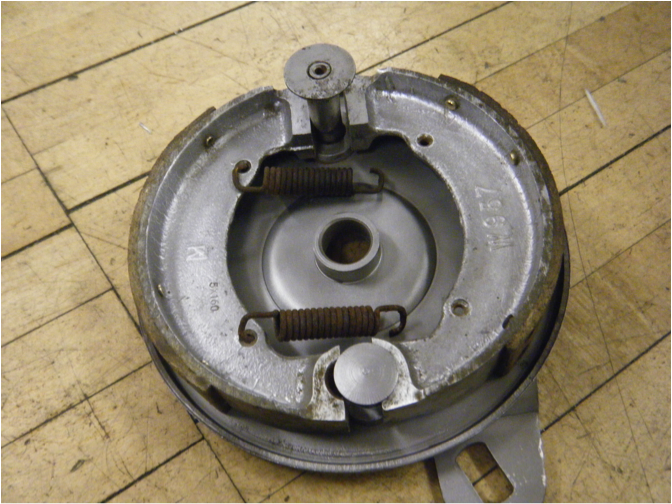
In the above photo you can see the two brake shoes that are attached by two springs (unattached in this picture). These springs exert an inward force on both brake shoes. What causes the brake shoes to push out is the rotation of the small piece at the top. This piece is sort of shaped like an elliptic cylinder. When the brake shoes are separated by only the minor axis, shorter radius, of the elliptic cylinder, they are closer together. However, as the elliptic cylinder turns, a longer axis comes between the two brake shoes, pushing them further apart.
Below are pictures of both the braking and nonbraking positions.
Not Braking
Braking
Restoration
Brakes
Our restoration of the brakes thus far has been mostly cleaning and separating the parts that were rusted together. We used a lot of Scoth-Brite Hand Pads, similar to steel wool, and degreaser to remove as much dirt, grease, and rust as possible. For one brake, the elliptic cyllinder was especially rusted and took a lot of derusting spray and a lot of force to free. We also used the sand blaster to remove coats of paint and dirt. It worked really well. Below is a picture of the brake we are still working on cleaning. You can easily tell the difference between the half we have started to clean and the half we haven’t. This brake is harder to clean than the other and is requiring us to sand off the paint manually before putting it in the sand blaster.
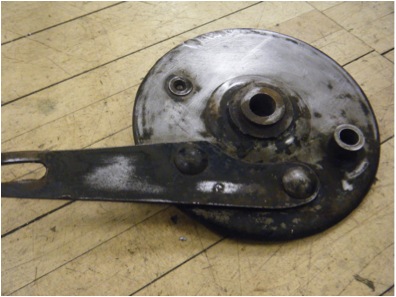
Wheels
We also removed the tires from the wheel frames by using screw drivers to pry one part off at a time while other people applied force to the other side of the wheel. We then cleaned the wheels using the Scotch-Brite Hand Pads, degreaser, and rust remover. We have ordered new tires from China because the old ones were not fixable.
Brake Pads
The only parts of the brakes and wheels we cannot clean vigourously using Scoth-Brite are the break pads. These are the thin layers on the oustide of the brake shows that actually come into contact with the drums. The reason we cannot clean these using Scotch-Brite is that we cannot scratch them at all. They must remain as smooth as possible to work effectively when they come into contact with the drums.
“Asbestos Brake Dust Still A Hazard.” AA1Car Auto Diagnosis Repair Help. Web. 15 Mar. 2010. <http://www.aa1car.com/library/trtu796.htm>.
“HowStuffWorks “How Drum Brakes Work”” Howstuffworks “Auto” Web. 15 Mar. 2010. <http://auto.howstuffworks.com/auto-parts/brakes/brake-types/drum-brake.htm>.
